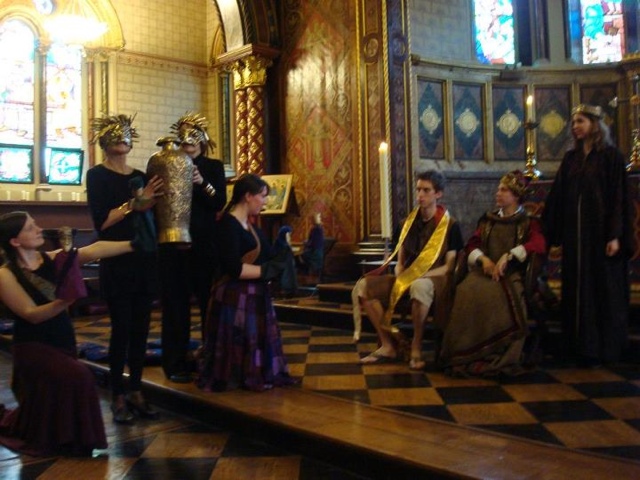Reading Sophie Nield's piece in the Guardian Theatre Blog (http://www.guardian.co.uk/stage/theatreblog/2012/apr/03/curtain-calls-clapped-out-convention) got me thinking about discussions surrounding our work on Jean Genet. Our group, having created what we felt was an hour of work that subverted expectation and challenged the audience to take Genet seriously as a writer who still has something to tell us, proposed not having a curtain call. Our tutor, Andrew Visnevski, responded favourably to the piece we created, and challenged us further; not having a curtain call has become the expectation when one sees edgy, challenging theatre. So the audience, coming to see an MA response to Jean Genet would most certainly expect no curtain call. . . so our hour's worth of subversion would be undermined by this choice. Instead, he suggested that we come out behind the audience, and applaud them along with the empty stage; in a way, this honouring the ghost of Genet whom we had conjured in the previous 10 weeks and who had inspired our work.
So this is how we proceeded. Certainly the effect was startling to the audience; we waited for them to begin applauding, then appeared behind them, also applauding. It took a moment for each person to catch on, the increase in volume from 14 extra sets of hands clapping, the distinct lack of bodies on stage receiving the thanks.
In a way, this choice did what Nield and many comments on the blog have suggested; it forced a truthful appreciation of the work separate from the appreciation of the individuals creating the work. It is certainly something to consider.
So this is how we proceeded. Certainly the effect was startling to the audience; we waited for them to begin applauding, then appeared behind them, also applauding. It took a moment for each person to catch on, the increase in volume from 14 extra sets of hands clapping, the distinct lack of bodies on stage receiving the thanks.
In a way, this choice did what Nield and many comments on the blog have suggested; it forced a truthful appreciation of the work separate from the appreciation of the individuals creating the work. It is certainly something to consider.


